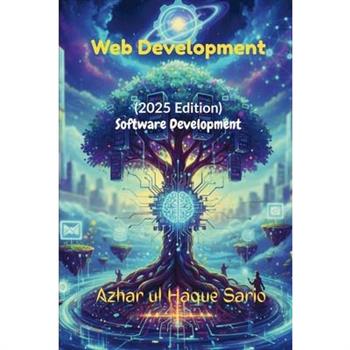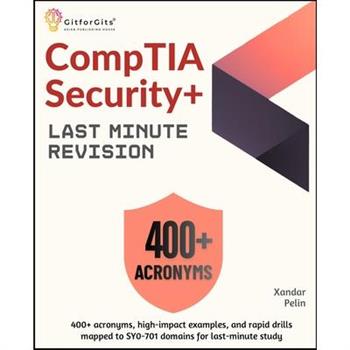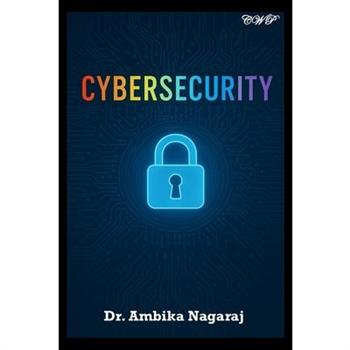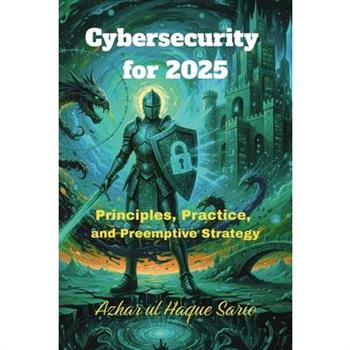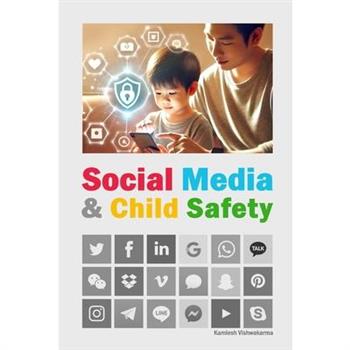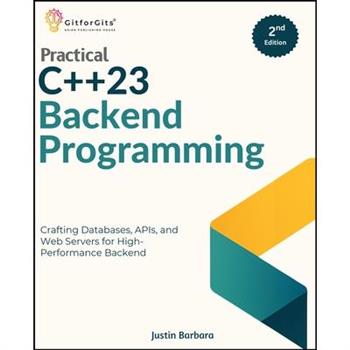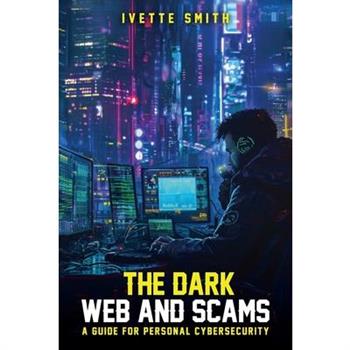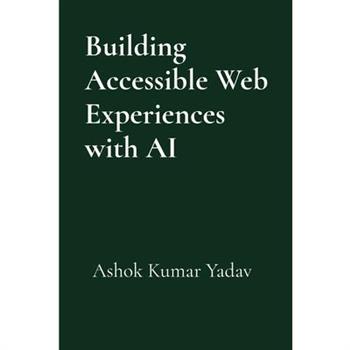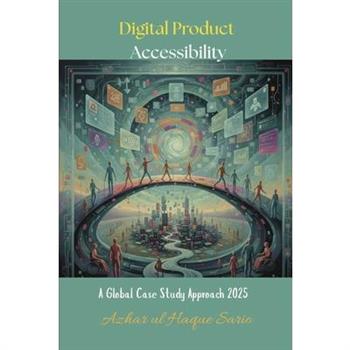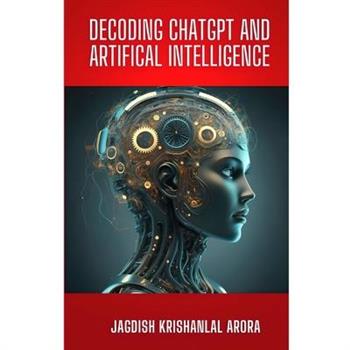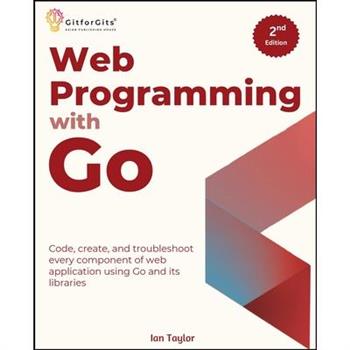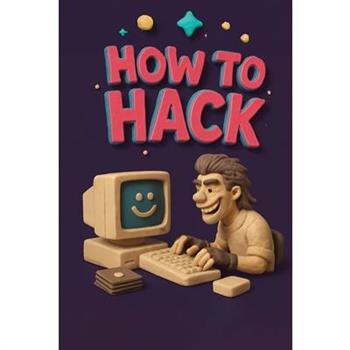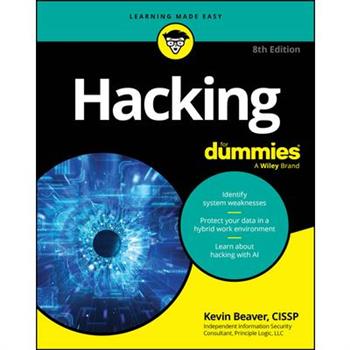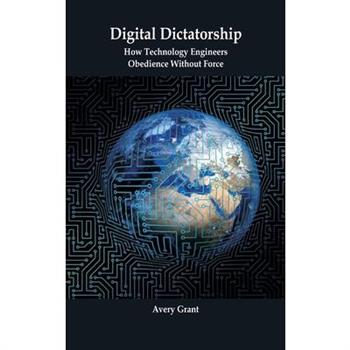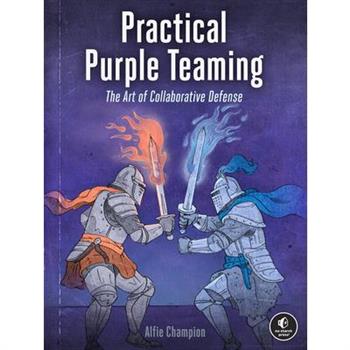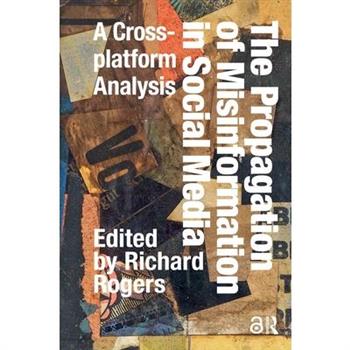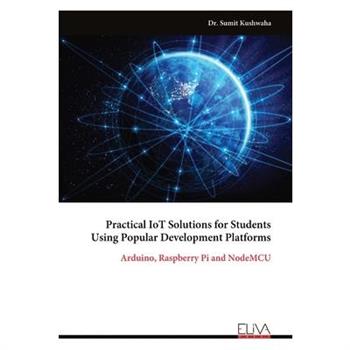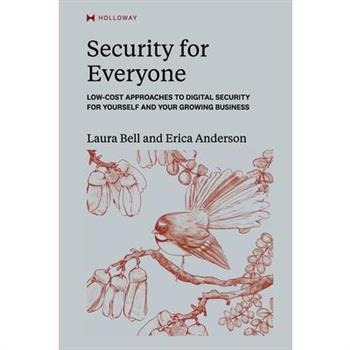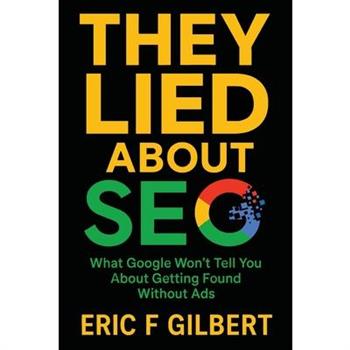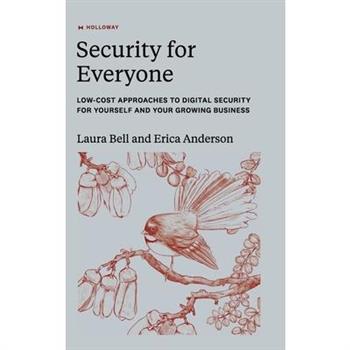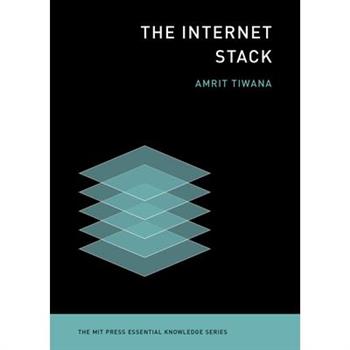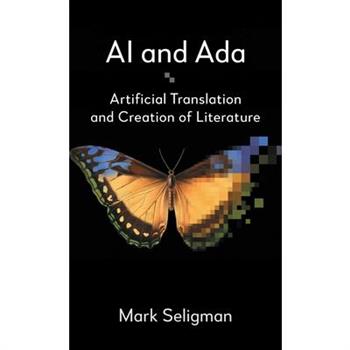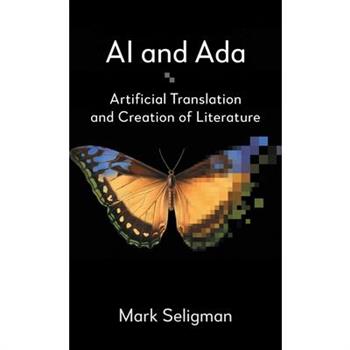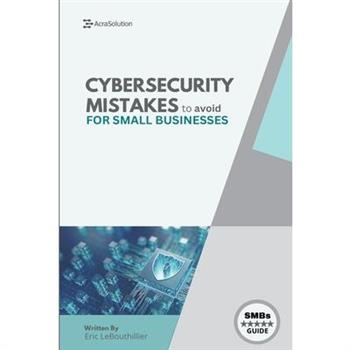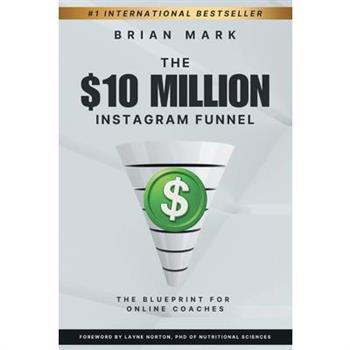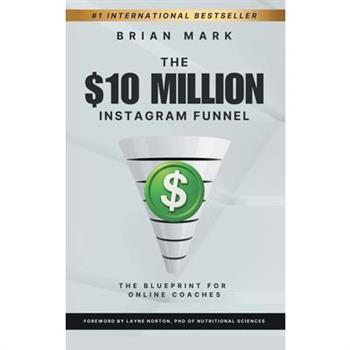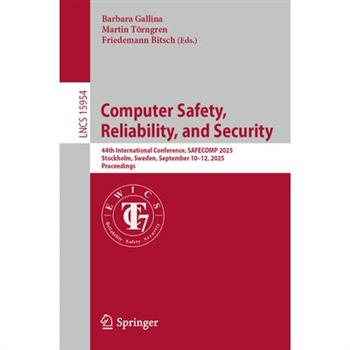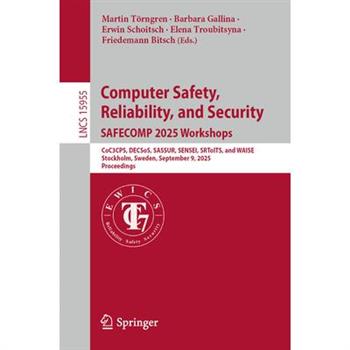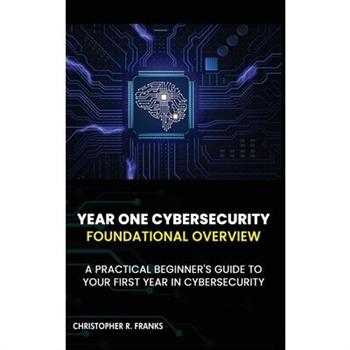Cybersecurity - A Broad Perspective
Cult of the Dead Cow
The shocking untold story of the elite secret society of hackers fighting to protect our freedom, "a hugely important piece of the puzzle for anyone who wants to understand the forces shaping the internet age" (The New York Times Book Review) Cult of the Dead Cow is the tale of the oldest active, most respected, and most famous American hacking group of all time. With its origins in the earliest days of the internet, the cDc is full of oddball characters--activists, artists, and musicians--some of whom went on to advise presidents, cabinet members, and CEOs, and who now walk the corridors of power in Washington and Silicon Valley. Today, the group and its followers are battling electoral misinformation, making personal data safer, and organizing to keep technology a force for good instead of for surveillance and oppression. Now featuring a new afterword with updates on the collective, Cult of the Dead Cow describes how, at a time when governments, corporations, and criminals hold immense power, a small band of tech iconoclasts is on our side fighting back.
Decoding Chatgpt and Artificial Intelligence
Hacking for Dummies
Think like a hacker to protect your sensitive information To safeguard your private data from prying eyes, it helps to understand how hackers do what they do. Hacking For Dummies gives you the tools you need to step into a hacker's shoes and discover the best strategies to secure your data. You won't learn how to steal your neighbors' Wi-Fi, but you will gain the skills to keep nosy hackers out of your systems and applications. With clear, jargon-free explanations, you'll learn to recognize cyberthreats and keep your information safe. This updated edition includes new content on AI, the Internet of Things (IoT), and the security implications of hybrid work. Understand the tools hackers use to steal sensitive data from individuals and businesses Discover methods of protecting your information--including improving your security, recognizing phishing scams, and more Assess your current network and cloud configurations from a hacker's perspective using proven vulnerability and penetration testing techniques Defend against AI-generated scams, lost devices, and other common threats Hacking For Dummies is for anyone looking to protect their devices from hacking--at home, at the office, or anywhere in-between.
TVOnline Last Public Chat Transcript
Practical Purple Teaming
Real-world threats demand real-world teamwork. If you're tired of red team reports gathering dust--or defensive teams being left in the dark--this book is for you. Practical Purple Teaming gives you a hands-on blueprint for running collaborative security exercises that improve detection, build trust, and expose real gaps before attackers do. You'll learn how to emulate adversaries using tools like Atomic Red Team, MITRE Caldera, and Mythic, and you'll guide defenders toward actionable insights using real logs, alerts, and frameworks like MITRE ATT&CK, the Cyber Kill Chain, and the Pyramid of Pain. If you're running your first purple team exercise or trying to scale a repeatable program, this book will show you how to move from ad hoc simulations to a sustainable, integrated strategy. You'll learn how to: Design purple team exercises that produce measurable improvements Emulate attacks using threat intel and adversary simulation toolsCollect telemetry and analyze coverage using open source platformsAutomate labs with Splunk's Attack Range and other free resourcesBuild a sustainable, cross-functional purple teaming function within your organizationWhether you're red, blue, or somewhere in between, this book will help you test smarter, detect faster, and collaborate better. If you've ever finished a red team engagement and wondered what actually changed, this is your playbook.
The Propagation of Misinformation in Social Media
There is growing awareness about how social media circulate extreme viewpoints and turn up the temperature of public debate. Posts that exhibit agitation garner disproportionate engagement. Within this clamour, fringe sources and viewpoints are mainstreaming, and mainstream media are marginalized. This book takes up the mainstreaming of the fringe and the marginalization of the mainstream. In a cross-platform analysis of Google Web Search, Facebook, YouTube, Reddit, Twitter, Instagram, 4chan and TikTok, the authors found that hyperpartisan web operators, alternative influencers and ambivalent commentators are in ascendency. The book can be read as a form of platform criticism. It puts on display the current state of information online, noting how social media platforms have taken on the mantle of accidental authorities, privileging their own on-platform performers and at the same time adjudicating between claims of what is considered acceptable discourse.
Practical IoT Solutions for Students Using Popular Development Platforms
Practical IoT Solutions for Students Using Popular Development Platforms: Arduino, Raspberry Pi and NodeMCU is your gateway to understanding the dynamic and rapidly evolving world of IoT. Designed for students and enthusiasts, this book provides a hands-on approach to learning, exploring practical applications of IoT using popular platforms like Arduino Uno, Raspberry Pi, and NodeMCU. This book bridges the gap between theory and practice, empowering readers to create innovative solutions for real-world problems. With step-by-step explanations, detailed projects, and simplified concepts, it introduces the fundamentals of IoT, sensor integration, cloud connectivity, and automation.
AHS Internet Password Logbook
Remembering internet passwords and usernames has never been more beautiful! Easily store this precious information all in one place with this alphabetically tabbed logbook. This handy and essential record-keeping tool from the foremost authority in North American gardening, the American Horticultural Society, is accented by historical botanical illustrations and filled with hundreds of entry templates that make it easy to track important device logins, passwords, usernames, URLs, recovery keys, and wireless network details. Gone are the days of scribbling these essential details on sticky notes that get lost or thrown away! The cut-away alphabetical tabs make the recorded information easy to find, and quick tips for creating strong passwords and keeping your information safe on the internet are also found inside. Included are places to record: 400 different websites and their usernames and passwords (with room for three password changes each) Login information and recovery keys for 6 different devices, including phones, tablets, or computersFactory-default and user-defined usernames and passwords for wireless networks A blank lined page for jotting down additional notesA removable title band and the botanical-accented cover mean others won't know that important information is housed in this pretty little book, making it as discreet as it is convenient. A perfect gift for any flower lover or for yourself! **Also in this series of giftable books from the American Horticultural Society is the AHS Weekly Planner.
Security for Everyone
Securing your business can be daunting, especially when you're small. That's why Security for Everyone offers low-cost, scalable solutions to securing your startup or growing business. It will test your personal security assumptions and practices, which will set you up to lead security for an ever-growing team. You'll learn frameworks for understanding security at different stages of your business, and be guided on a practical journey from secure individual to security leader.Security for Everyone focuses on practical, flexible, step-by-step, affordable approaches that can scale to suit your situation and needs, in language non-technical folks can understand.You'll learn: Why security matters and how it applies to our business, systems, data, and people.How to protect your own data and key accounts online (such as email and social media)-not just for your own benefit but for the safety of those you care about.How to protect your small business and the key data and tools you rely on to operate-from your website to your email-whether you are protecting yourself or working with a service provider.How to protect your startup and maximize your chance of survival as you take big risks and innovate-from vulnerability management as the technical environment team grows, to communicating security with your customers.How to scale your security for your growing organization-moving your security approach from foundations, to weaving security through your day to day operations and assessing the threats you face as your strategy changes.
They Lied About SEO
They Lied About SEO is the no-fluff, real-world guide for small business owners, content creators, and entrepreneurs who are sick of being invisible online.You've probably been told that SEO is all about keywords, backlinks, and technical tricks. You've probably also been told that to get seen, you'll need to run ads, hire an agency, or learn how to "play the algorithm." But after spending time, money, and energy on things that don't work, you're still not showing up where it matters. That's not your fault.They lied to you.In this raw and revealing book, serial entrepreneur and marketing expert Eric F Gilbert exposes the truth behind the SEO industry-and why it's rigged to keep you confused and paying. He's helped hundreds of real people build real visibility without spending a fortune, writing code, or waiting months for results.This book breaks down how online visibility really works in today's AI-driven internet, and shows you how to become the authority people trust and the name they see everywhere-without needing to master tech or chase ever-changing search engine updates.You'll discover: Why traditional SEO advice fails most small business ownersHow to build digital visibility without ads, hacks, or complexityA proven strategy that leverages real conversations, expert positioning, and omnipresenceHow to dominate your niche by becoming the one people see, trust, and buy fromWhether you're just starting out or you've been spinning your wheels for years, They Lied About SEO will finally give you the clarity and strategy you need to get found-and get paid.Stop wasting time. Stop guessing. Stop feeding the machine. It's time to own your visibility.
Security for Everyone
Securing your business can be daunting, especially when you're small. That's why Security for Everyone offers low-cost, scalable solutions to securing your startup or growing business. It will test your personal security assumptions and practices, which will set you up to lead security for an ever-growing team. You'll learn frameworks for understanding security at different stages of your business, and be guided on a practical journey from secure individual to security leader.Security for Everyone focuses on practical, flexible, step-by-step, affordable approaches that can scale to suit your situation and needs, in language non-technical folks can understand.You'll learn: Why security matters and how it applies to our business, systems, data, and people.How to protect your own data and key accounts online (such as email and social media)-not just for your own benefit but for the safety of those you care about.How to protect your small business and the key data and tools you rely on to operate-from your website to your email-whether you are protecting yourself or working with a service provider.How to protect your startup and maximize your chance of survival as you take big risks and innovate-from vulnerability management as the technical environment team grows, to communicating security with your customers.How to scale your security for your growing organization-moving your security approach from foundations, to weaving security through your day to day operations and assessing the threats you face as your strategy changes.
Grey Area
A compelling, first-hand account of the dark web, from its underground ecosystem, to the people responsible for committing data breaches and leaking data, 21st century's most consequential data breaches, the responses to those attacks, and the impact of dark web data and intelligence gathering and can have in the defense and security of our nation. In Grey Area, veteran hacker and cybersecurity investigations expert Vinny Troia offers an unfiltered, first-person look into the evolving relationship between open-source intelligence (OSINT) and the dark web data ecosystem. Drawing from years of hands-on experience in digital forensics, dark web investigations, and adversarial engagement, Troia explores how publicly available and commercially available information--PAI and CAI--are rapidly becoming the backbone of modern intelligence operations, and how a human intelligence network of known cyber criminals helped identify and stop one of the largest data breaches in known history. This book examines the legal, operational, and ethical dimensions of collecting and exploiting data from the darkest corners of the internet, including leaked databases, breached credentials, and hidden criminal networks. It breaks down how to discover, process, validate, and operationalize this data in real-world contexts--from attribution and threat actor profiling to national security use cases. You'll explore the evolution of OSINT within the Department of Defense and the Intelligence Community through exclusive, first-hand accounts from senior officials who helped define its path. You'll also learn how AI and automation tools are being used to validate data at scale, detect disinformation, and supercharge open-source investigations. The book also covers how data is stolen and what happens to it after the theft. Through his direct account as Reddington, Troia provides actual unedited conversations with the cyber criminals responsible for a hack targeting more than 160 companies, including his own interactions leading to the hack, the extortion negotiation and responses with each of the effected organizations, and how the hackers were ultimately brought to justice. From discussions of the legal grey areas of data collection, ransom negotiations, and a first-hand perspectives of his interaction with well-known hackers, Grey Area is a compelling and honest account of the realities of the dark web, data theft, and ways in which the intelligence community should be leveraging these methods to help strengthen our national security. Inside the book: Blow-by-blow accounts of one of the largest data breaches in recorded history Interviews and commentary from high level officials at the CIA, ODNI, DIA, and DOD. Informed, insightful commentary on how cybersecurity professionals are using dark web open-source intelligence to strengthen national security, and our country's defenses against hackers and foreign adversaries. Revealing interviews with experienced hackers who explain a variety of approaches, philosophies, and strategies for combatting and recovering from data breaches Grey Area is essential reading for cybersecurity professionals, intelligence analysts, investigators, and policy leaders navigating the complex intersection of dark web data, national security, and open-source intelligence. Through real-world case studies and insider accounts, it delivers actionable insight into the future of data-driven investigations, threat attribution, and the expanding role of OSINT in modern intelligence operations.
The Internet Stack
An accessible journey through the seam that connects the digital world of the Internet to our physical world. The stack--the conduit between our digital and physical worlds--is the elusive, mysterious, and least-understood part of the Internet. In the five seconds it took you to read that, 100 quadrillion bits of data just whizzed through the stack. Our metaphors--cloud, virtual, cyber--blind us to the incredible reality: The Internet is a physical thing: dingy, wet, and rusty. In The Stack, Amrit Tiwana takes us on a journey through this gritty reality. The book begins with its breathtaking physical layer, laden with geography, luck, and history dating to the Civil War era. Then it shows us how most Internet traffic flows deep undersea as laser beams, not up in the "cloud" via satellites. It goes on to explore how the stack constructs and deconstructs "packets" layer-by-layer, how these packets travel over rickety paths, and how the stack can assimilate stuff that has yet to be invented. Finally, it discusses how we construct resilience out of fragile parts and how quantum computing might affect the stack.
Cybersecurity For Beginners
Gain mastery over Cybersecurity Essentials without being overwhelmed by technical jargon or prior tech experience!Are you curious about the rapidly evolving world of cybersecurity but find yourself lost in a sea of acronyms and technical vocabulary? Do you want to protect your personal information online but fear making mistakes that could compromise your security? Are you looking to break into a cybersecurity career but unsure where to begin? If you've found yourself nodding along, you're not alone. Many individuals, eager to explore technology and protect themselves in a digital world, grapple with similar concerns. However, there's no need to feel daunted. Discover how "Cybersecurity For Beginners" can empower you to navigate this exciting field with confidence and ease. Here's just a taste of what you can unveil inside this enlightening guide: The beginner-friendly guide to cybersecurity, designed specifically for those with minimal technical background.Five fundamental principles of cybersecurity you need to know to safeguard your digital life.A complete mapping of common cyber threats like phishing, malware, and ransomware-and how to shield yourself against them.How to fortify your passwords without creating cumbersome combinations you'll forget.Explore various career paths in cybersecurity with insights from diverse roles like SOC analyst and penetration tester.Step-by-step instructions on setting up a VPN and using two-factor authentication for enhanced protection.Learn the practical application of cybersecurity measures through real-world case studies.Eight game-changing security habits that elevate your personal safety in the digital realm.The importance of the CIA triad and its role as the cornerstone of all cybersecurity practices.How current trends and technologies impact cybersecurity and what you must watch out for.Tips for avoiding common cybersecurity pitfalls to protect your home network without worry....and much more! Think you need to be a tech expert to understand this book? Think again! This guide is crafted with clarity and real-world practicality at its core, using accessible language with visual aids to make complex ideas relatable and easy to grasp. In this rapidly evolving digital age, keeping up with cybersecurity shouldn't be a daunting task but an empowering journey. Whether you're starting from scratch or looking to refine your skills, this book provides a comprehensive, up-to-date resource tailored for beginners. Embrace this opportunity to get ahead in cybersecurity and safeguard your digital future with confidence. Scroll up and click "Add to Cart" to begin your journey now! See you on the inside.
AI and ADA
Preface The book's Preface places the current AI explosion in the context of other technological cataclysms and recounts the author's personal (and not always deadly serious) AI journey. Chapter One: "Extracting the Essence: Toward Machine Translation of Literature" This 2019 essay rashly inquired whether artificial intelligence (AI) and machine translation (MT) might eventually be applied to literary translation. Such translation strives to somehow preserve the essence of a work while carrying it over to a different language and culture and giving it rebirth there. To recognize that essence, the translator must accurately capture the meaning of the original; appreciate its metaphors, connotations, register, references, and other abstract or associative factors; and choose among available target language expressions by exercising esthetic judgments. Computers, however, have until recently remained incapable of such accuracy, abstraction, and judgment. We revisited these shortfalls in light of developments in MT and AI. We teased apart several separable aspects of literary translation - literal meaning, meter, rhyme, and the abovementioned associative elements - with reference to arguments about Vladimir Nabokov's hyper-literal translation of Pushkin's poem Eugene Onegin. Prompted by this debate, we came to analyze translation as an optimization problem: because it will often prove impossible to perfectly convey all aspects or essences of a text in a single translation, the translator must search for some optimal compromise. Then we discussed several avenues for improvement in MT which could help to extract these aspects of a text's essence - first, those which might enhance textually grounded MT (i.e., MT trained on text only), leading to delivery of high-quality literal translations; and second, those related to perceptually grounded MT (i.e., MT trained on simulated perception, e.g. of audiovisual input, as well as text), which might extract more abstract or associative elements of a text. We suggested that recognition of categories would prove central to the essence extraction sought by translators. As this categorization improves, MT should increasingly support literary, and thus cultural, preservation. However, the deepest artificial esthetic judgments will await artificial emotion. Chapter One concluded with two appendices, the first sampling numerous competing translations of Pushkin verses and the second displaying widely varying translations of a short French poem. Chapter Two: "Toward an Artificial Nabokov" Chapter One inquired whether artificial translation of literature might be at all possible. The cautious conclusion was that while high-quality literal translation might be achievable through foreseeable development of current techniques, artistic translation would await artificial emotion, a more distant prospect. This 2021 sequel went on to ask whether an artificial intelligence might eventually gain the ability to actually create works of literary art. To throw literary consciousness into the sharpest relief, we took as exemplar an author known for a kind of hyper-consciousness: Vladimir Nabokov. To be sure, the suggestion that artworks combining Nabokov's superhuman intricacy and wholly human depth could be authored by a collection of switches would horrify this transcendent author, and does seem to fly in the face of everything that is most human. But while we are concerned with what machines might do, our more fundamental concern is to understand the human thoughts and feelings to which machines might aspire; and this understanding, promising to bridge the gap between C.P. Snow's two cultures, is finally coming within reach. In our literary context, Nabokov scholarship provides many specific examples - in Ada: or Ardor, Pale Fire, and other works - of the author's hyper-conscious artistic techniques: glorying in memory; repetition to establish themes and motifs; allusion to wide-ranging w
AI and ADA
Preface The book's Preface places the current AI explosion in the context of other technological cataclysms and recounts the author's personal (and not always deadly serious) AI journey. Chapter One: "Extracting the Essence: Toward Machine Translation of Literature" This 2019 essay rashly inquired whether artificial intelligence (AI) and machine translation (MT) might eventually be applied to literary translation. Such translation strives to somehow preserve the essence of a work while carrying it over to a different language and culture and giving it rebirth there. To recognize that essence, the translator must accurately capture the meaning of the original; appreciate its metaphors, connotations, register, references, and other abstract or associative factors; and choose among available target language expressions by exercising esthetic judgments. Computers, however, have until recently remained incapable of such accuracy, abstraction, and judgment. We revisited these shortfalls in light of developments in MT and AI. We teased apart several separable aspects of literary translation - literal meaning, meter, rhyme, and the abovementioned associative elements - with reference to arguments about Vladimir Nabokov's hyper-literal translation of Pushkin's poem Eugene Onegin. Prompted by this debate, we came to analyze translation as an optimization problem: because it will often prove impossible to perfectly convey all aspects or essences of a text in a single translation, the translator must search for some optimal compromise. Then we discussed several avenues for improvement in MT which could help to extract these aspects of a text's essence - first, those which might enhance textually grounded MT (i.e., MT trained on text only), leading to delivery of high-quality literal translations; and second, those related to perceptually grounded MT (i.e., MT trained on simulated perception, e.g. of audiovisual input, as well as text), which might extract more abstract or associative elements of a text. We suggested that recognition of categories would prove central to the essence extraction sought by translators. As this categorization improves, MT should increasingly support literary, and thus cultural, preservation. However, the deepest artificial esthetic judgments will await artificial emotion. Chapter One concluded with two appendices, the first sampling numerous competing translations of Pushkin verses and the second displaying widely varying translations of a short French poem. Chapter Two: "Toward an Artificial Nabokov" Chapter One inquired whether artificial translation of literature might be at all possible. The cautious conclusion was that while high-quality literal translation might be achievable through foreseeable development of current techniques, artistic translation would await artificial emotion, a more distant prospect. This 2021 sequel went on to ask whether an artificial intelligence might eventually gain the ability to actually create works of literary art. To throw literary consciousness into the sharpest relief, we took as exemplar an author known for a kind of hyper-consciousness: Vladimir Nabokov. To be sure, the suggestion that artworks combining Nabokov's superhuman intricacy and wholly human depth could be authored by a collection of switches would horrify this transcendent author, and does seem to fly in the face of everything that is most human. But while we are concerned with what machines might do, our more fundamental concern is to understand the human thoughts and feelings to which machines might aspire; and this understanding, promising to bridge the gap between C.P. Snow's two cultures, is finally coming within reach. In our literary context, Nabokov scholarship provides many specific examples - in Ada: or Ardor, Pale Fire, and other works - of the author's hyper-conscious artistic techniques: glorying in memory; repetition to establish themes and motifs; allusion to wide-ranging w
The $10 Million Instagram Funnel
Brian Mark shares the proven strategies he used to grow a thriving online fitness business without paid ads, complicated funnels, or a website. This book is a step-by-step guide for fitness professionals looking to attract high-paying clients, generate consistent leads, and scale using organic social media. Brian breaks down how to build a standout personal brand, create content that converts, and implement a simple system for lead generation and sales. Whether you're just starting or ready to grow, this book gives you the blueprint to build a six-figure fitness business with ease.
The $10 Million Instagram Funnel
In $10 Million Instagram Funnel, Brian Mark shares the proven strategies he used to grow a thriving online fitness business without paid ads, complicated funnels, or a website. This book is a step-by-step guide for fitness professionals looking to attract high-paying clients, generate consistent leads, and scale using organic social media. Brian breaks down how to build a standout personal brand, create content that converts, and implement a simple system for lead generation and sales. Whether you're just starting or ready to grow, this book gives you the blueprint to build a six-figure fitness business with ease.
The Podcast Pantheon
Spanning the most popular podcast genres--true crime, comedy, sports, relationships, and more--culture critic and Vulture's Start Here columnist Sean Malin introduces the first comprehensive canon in podcast history. Featuring a foreword by award-winning actor and producer Jon Hamm. The Golden Age of podcasts is upon us. With over fifty official podcast networks, more than three million programs of every imaginable category available for download, and tens of millions of unique listens and views every week in the US alone--plus, our favorites being adapted into dozens of beloved films, TV series, and books--podcasts are now part of the fabric that makes up our everyday global media. Finally, here is an exclusive insider's perspective told through 101 different shows across dozens of genres. The Podcast Pantheon is the first book of its kind: A resource for discovering podcasts and learning more about how this multibillion-dollar industry came into being from the geniuses who created it. Delving into genres of all kinds--including fashion, food, health, sex, tech, and more--Malin profiles all the top podcasts, from Serial to Comedy Bang! Bang!, guiding fans to: Find out more about their favorite shows and how they got started. Learn about each podcast's influences and impact on culture, history, future shows, and the industry at large. Hear exclusive stories and enjoy never-before-seen behind-the-scenes photos from favorite hosts. Discover hidden gems, whether an entirely new podcast, a new-to-you genre, or something reminiscent of an old favorite. Readers will find podcasts worth listening to and get expert advice on the best episodes to start with, solving one of the biggest and most intimidating hurdles when trying to dive into a longstanding show. Malin's easy-to-read profiling and titillating exploration of 101 podcasts offers something for everybody, whether you've been listening to podcasts for years, are new to them, or are looking to start your own. EXPERT KNOWLEDGE: A culture critic since 2007 and the writer behind Vulture's hit podcasting column Start Here, Sean Malin has interviewed and connected with the world's top podcasters, including Marc Maron, Conan O'Brien, Nicole Byer, Ira Glass, and Jenna Fischer and Angela Kinsey, among many others, and has the inside scoop on the most popular and award-winning podcasts. A MUST-HAVE LISTENER'S COMPANION: Dip in and out of this enticing guide that's perfect for beginners and serious listeners alike. Profiled podcasts include: WTF with Marc Maron My Favorite Murder Conan O'Brien Needs a Friend Office Ladies Why Won't You Date Me? The Accessible Stall Stuff You Should Know Wait, Wait . . . Don't Tell Me! How Did This Get Made? Fresh Air The Moth S-Town Hollywood Handbook Doughboys Bad with Money Welcome to Night Vale And many more! FAN FAVORITES AND NEW DISCOVERIES: Sean Malin reveals fascinating information about 100+ shows and their talented hosts, tells you where to listen, and offers his favorite episode pick for each. His wide-ranging and comprehensive overview gives ample opportunity to discover something new to dive right into. Perfect for: Podcast enthusiasts and new listeners Those in search of new podcasts to devour Podcast creators and anyone interested in starting their own podcast Foodies, artists, entrepreneurs, fashionistas, parents, teachers, fitness enthusiasts, newshounds, and many more Gift-giving to podcast junkies and pop culture fans Media professionals, scholars, educators, historians, and consumers
Computer Safety, Reliability, and Security
This book constitutes the refereed proceedings of the 44th International Conference on Computer Safety, Reliability and Security, SAFECOMP 2025, held in Stockholm, Sweden, during September 2025. The 15 full papers included in these proceedings were carefully reviewed and selected from 79 submissions. They were organized in topical sections as follows: Safety Arguments/Cases; Data Sets and Dependability Properties; Testing and Complex Environments; Methodologies (1) - Safety Design and Risk Assessment; and Methodologies (2) Machine Learning and Large Language.
Computer Safety, Reliability, and Security. Safecomp 2025 Workshops
This book constitutes the proceedings of the Workshops held in conjunction with the 44th International Conference on Computer Safety, Reliability, and Security, SAFECOMP 2025, which took place in Stockholm, Sweden, during September 2025. The 43 papers included in this book were carefully reviewed and selected from a total of 61 submissions to the following six workshops: - CoC3CPS 2025, Co-Design of Communication, Computing and Control in Cyber-Physical Systems - DECSoS 2025 - 20th Workshop on Dependable Smart Embedded and Cyber-Physical Systems and Systems-of-Systems - SASSUR 2025 - 12th International Workshop on Next Generation of System Assurance Approaches for Critical Systems - SENSEI 2025 - 4th International Workshop on Safety and Security Interaction - SRToITS 2025 - 2nd International Workshop on Safety/Reliability/Trustworthiness of Intelligent Transportation Systems - WAISE 2025 - 8th International Workshop on Artificial Intelligence Safety Engineering
The Social Media Trap - How to Protect Your Mental Health in a Digital World
Social media was designed to connect us-but for many, it's doing the opposite. Anxiety, comparison, loneliness, and burnout are becoming the hidden costs of a life lived online.The Social Media Trap - How to Protect Your Mental Health in a Digital World is a wake-up call and a guidebook for anyone feeling overwhelmed by the endless scroll. Backed by psychology, neuroscience, and real-world stories, this book reveals how digital platforms are engineered to hijack your attention, exploit your emotions, and subtly shape your self-worth-and more importantly, how to break free.This isn't about quitting the internet. It's about reclaiming your time, focus, and emotional well-being in a hyperconnected world.Inside, you'll learn: How social media affects the brain-especially dopamine, attention, and moodThe links between screen time, anxiety, depression, and self-esteemThe role of algorithms in creating addiction, polarization, and FOMOPractical strategies to set digital boundaries and reduce online stressHow to curate a healthier online environment without disconnecting completelyTools for developing digital resilience, self-awareness, and mindful tech habitsWhether you're a parent, teen, professional, or everyday user, The Social Media Trap offers clarity in a confusing landscape. It empowers you to take control of your digital experience-and protect your mental health without giving up the benefits of modern connection.Because your mind is too valuable to be managed by an algorithm.
Dark Web Reality
Step beyond the headlines and into the shadows of the internet's most mysterious realm.From secret marketplaces to encrypted communication hubs, the dark web has captured public imagination as a place of danger, secrecy, and forbidden activity. But the truth is far more complex. In Dark Web Reality, you'll journey through the internet's hidden layers-uncovering the facts, the myths, and the double-edged nature of anonymity in the digital age.Inside, you'll discover: The three layers of the internet - surface, deep, and dark web - and how they interact.The rise of Tor and onion routing, and why anonymity can be both a shield for freedom and a cloak for crime.Digital black markets, from the infamous Silk Road to modern underground economies.The light within the darkness - whistleblowing platforms, human rights tools, and lifesaving uses of hidden networks.Law enforcement in the shadows, battling cybercrime while protecting online freedoms.How to stay safe online, avoid scams, and understand the ethical boundaries of hidden internet use.Written with investigative depth and clear explanations, Dark Web Reality pulls back the digital curtain to reveal what truly happens beyond the reach of Google. Whether you're a cybersecurity enthusiast, a concerned citizen, or simply curious about what lies beneath the surface, this book will equip you with the knowledge to navigate - and understand - the hidden world of the internet.Enter at your own risk - and with open eyes.
Year One Cybersecurity
Embark on your exciting cybersecurity career with confidence using Year One Cybersecurity: Foundational Overview. This clearly structured guide empowers aspiring professionals with essential knowledge, practical skills, and the right mindset to excel in a rapidly evolving field. Packed with real-world scenarios and clear explanations, it bridges the gap between theory and practice so you can hit the ground running in your first year.Inside this comprehensive guide, you will: - Master core security principles and frameworks, building a rock-solid foundation from day one.- Gain hands-on experience through practical exercises and labs that mirror real-world scenarios.- Learn to use industry-standard tools and best practices, from network defense to incident response.- Develop communication skills to articulate threats and solutions to both technical and non-technical audiences. - Get insider tips to navigate your first year in the field with confidence and professionalism.Whether you're launching your cybersecurity career or reinforcing the basics, Year One Cybersecurity will become your go-to reference for years to come. It provides the knowledge, skills, and confidence you need to survive and thrive in the exciting world of cybersecurity!




